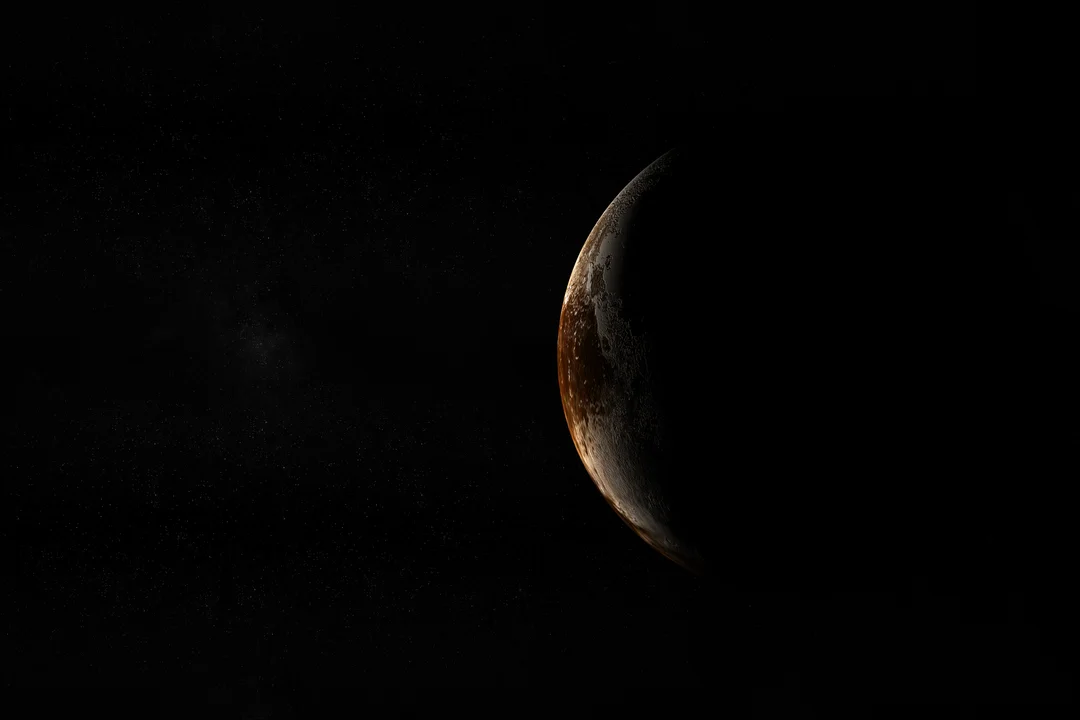
Astronomers Revive Planet Nine Hunt: Is a Hidden Giant Lurking in Our Solar System?
Is our solar system hiding a ninth planet? For years, the search for a hypothetical "Planet Nine" has captivated astronomers, and recent findings are adding fuel to the fire. Could this elusive ice giant rewrite astronomy textbooks?
The debate surrounding Planet Nine has been simmering since Pluto's reclassification in 2006. Now, several lines of evidence are converging, suggesting that a Neptune-sized object might be lurking in the outer reaches of our solar system, far beyond Neptune's orbit.

Evidence Mounts for a Distant World
A team from a university in Taiwan believes a Neptune-sized object could be wandering roughly 46.5 to 65.1 billion miles from the sun. Their research, based on deep infrared surveys taken over two decades apart, identified a possible candidate that could take between 10,000 and 20,000 years to orbit the sun.
This potential planet could explain some unusual patterns observed in the Kuiper Belt, a region beyond Neptune filled with icy bodies. According to NASA, some objects in this zone appear to be pulled together by an unseen force, while others move in the opposite direction from everything else. A massive, distant planet could be responsible for this gravitational influence.
"Essentially, we’re watching pinballs in a cosmic arcade,” said André Izidoro, assistant professor of Earth, environmental and planetary sciences at Rice and the study’s lead author. “When giant planets scatter each other through gravitational interactions, some are flung far away from their star. If the timing and surrounding environment are just right, those planets don’t get ejected, but rather they get trapped in extremely wide orbits.”
How Big and What Is It Made Of?
Researchers estimate that if Planet Nine exists, it could weigh between seven and seventeen times as much as Earth, placing it in the ice giant category, similar to Uranus or Neptune. Due to its immense distance from the sun, its temperature could range from –370°F to –360°F. Its thick atmosphere likely contains gas and ice, reflecting very little sunlight, making it difficult to detect with traditional telescopes.

The "Cosmic Arcade" and Exiled Planets
A new study published in Nature Astronomy suggests that wide-orbit planets are natural by-products of a chaotic early phase in planetary system development. André Izidoro's team at Rice University ran thousands of simulations involving different planetary systems. They propose that planets are frequently pushed into wide, eccentric orbits by internal instabilities and then stabilized by the gravitational influence of nearby stars in the cluster.
This research also could explain the origin of free-floating, or “rogue,” planets — worlds ejected from their systems entirely. Not every scattered planet is lucky enough to get trapped in a wide orbit; most end up being flung into interstellar space.
Cautious Optimism and Future Searches
While the evidence is intriguing, astronomers remain cautiously optimistic. The data so far can't confirm a full orbit. Follow-up observations by powerful ground-based and space-based instruments are crucial. Scientists plan to revisit the same area of sky to see if the faint signal continues to move at a pace expected for an object far beyond Neptune.
The upcoming Vera C. Rubin Observatory, with its unparalleled ability to survey the sky, is expected to significantly advance the search for distant solar system objects, increasing the likelihood of either detecting Planet Nine or providing the evidence needed to rule out its existence.
A Rewrite of Astronomy Textbooks?
If Planet Nine turns out to be real, it could revolutionize our understanding of how solar systems form and necessitate a rewrite of astronomy textbooks. It might also change how we look for planets around other stars. If our own system hides a world this far out, similar hidden giants could be common elsewhere.
The hunt for Planet Nine continues. Is there a hidden giant lurking in the darkness, waiting to be discovered? Share your thoughts and theories in the comments below.